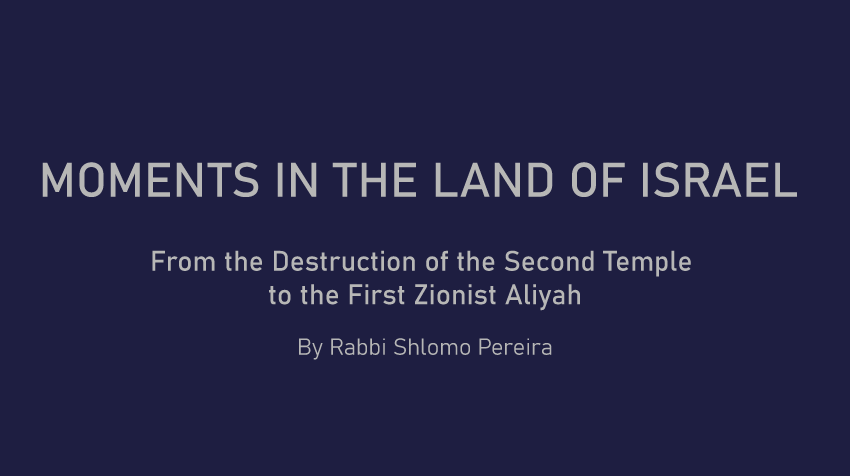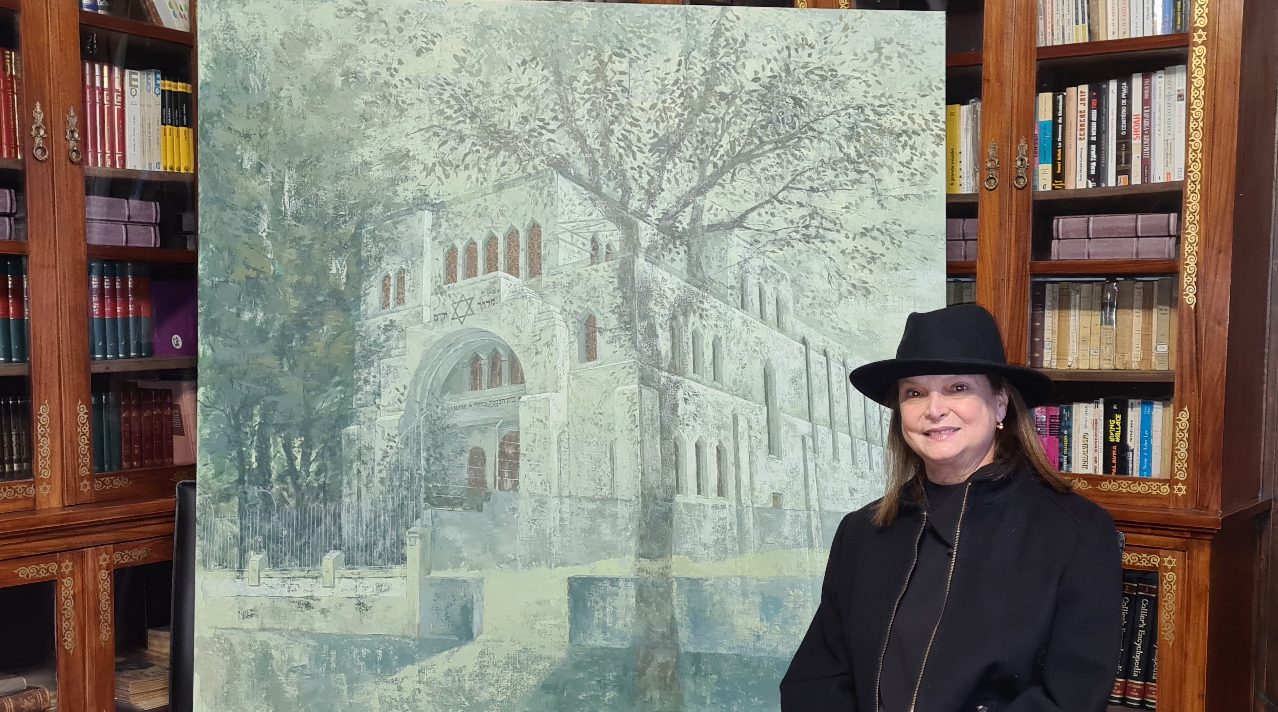Highlighting the permanent Jewish presence and the relevance of Jewish contributions in Eretz Israel as well as the continuous connection between Diaspora Jews and Eretz Israel throughout the centuries between the Destruction of the Second Temple and the onset of modern Zionism, through a series of one-page notes distributed weekly.
DID YOU KNOW THAT... In 1474, the Ramban Synagogue in the Old City of Jerusalem, was destroyed by its Muslim neighbors? The synagogue was built in 1267, out of a pre- crusader period ruined house on Mount Zion, under the leadership of R. Moshe ben Nachman [c.1194-c.1270], aka RAMBAN. It was built below street level in compliance with the Islamic law that non-Muslim houses of worship must sit lower than mosques. The building shared a wall with a
mosque, which would be a regular source of problems. In 1473, due to an unusually heavy rainstorm, part of the synagogue collapsed. The Muslim authorities used this as a pretext to close it down. The Jewish residents appealed to the Mameluke Sultan Sayf ad-Din Qa'itbay [r. 1468-1496], and ultimately, in 1474, they were given permission to repair the synagogue. As
news of this decision reached the Old City, the Muslims of the adjoining mosque contested the verdict and for two days rioted to completely demolish the synagogue. While the perpetrators were punished for defying the orders of the Sultan, reconstruction was only allowed in exchange for heavy payments and a fair amount of bribes. These events are reported by Mujir al-Din al- Ulaymi [1455-1522], an outstanding Islamic scholar and historian of Jerusalem,
in a rather detailed albeit antagonistic manner. He also reports that the Jews of Jerusalem lived in the Street of the Jews and used the Gate of the Jewish Quarter, a gate slightly east of where the Zion Gate stands today. The synagogue was rebuilt in 1523. It was closed again in 1586 by orders of the Ottoman Sultan Murad III [r. 1574-1595]. In 1598, it was confiscated and further legal disputes barred. Over the next centuries, the building was used as a mosque, a cheese factory and a flourmill. The building was once again destroyed in 1948 by the Arab Legion. It was rebuilt and rededicated in the aftermath of the 1967 Six Day War, thereby becoming the oldest active synagogue in the Old City of Jerusalem.

































